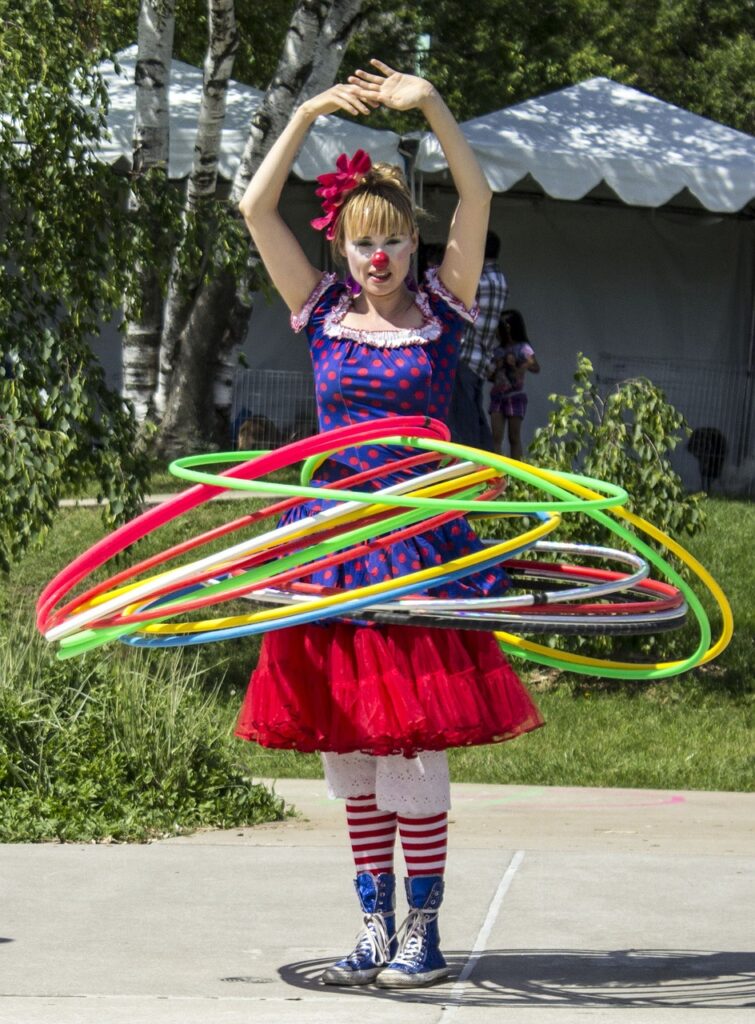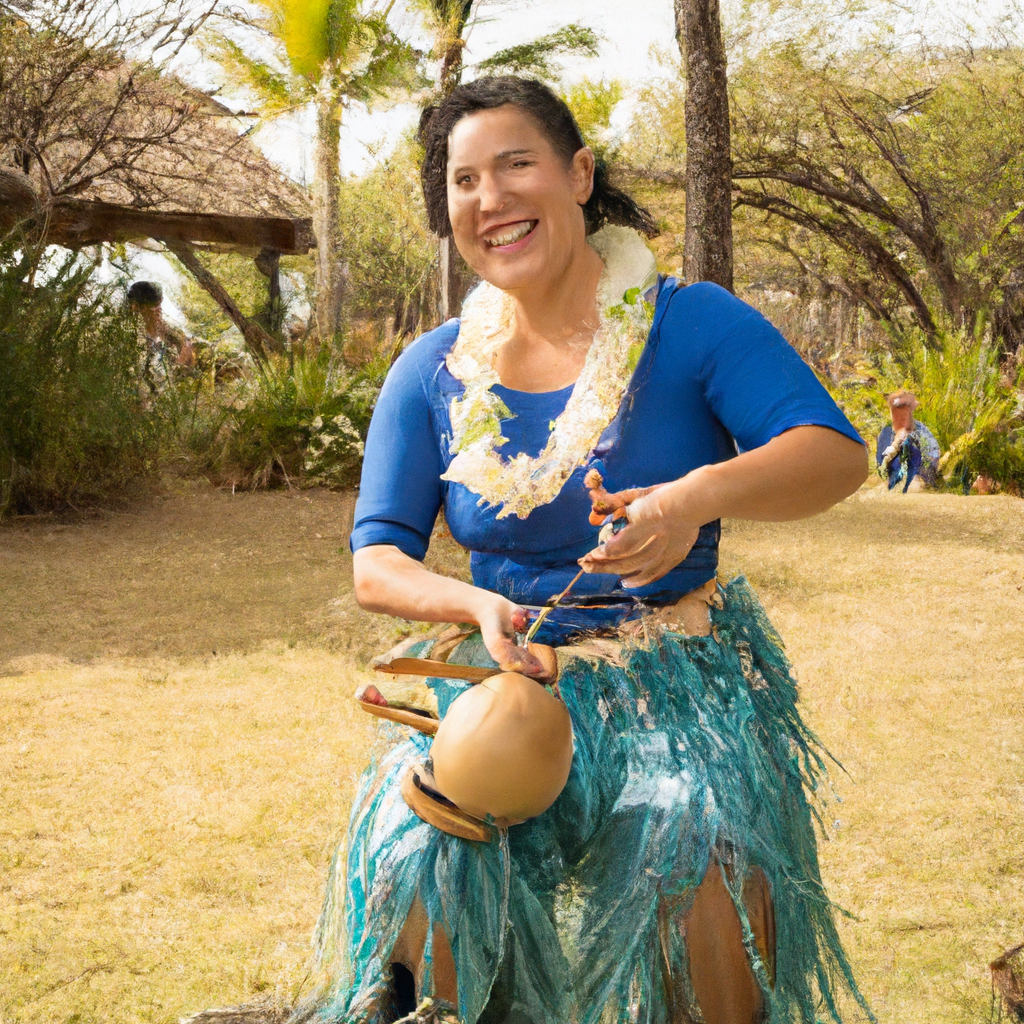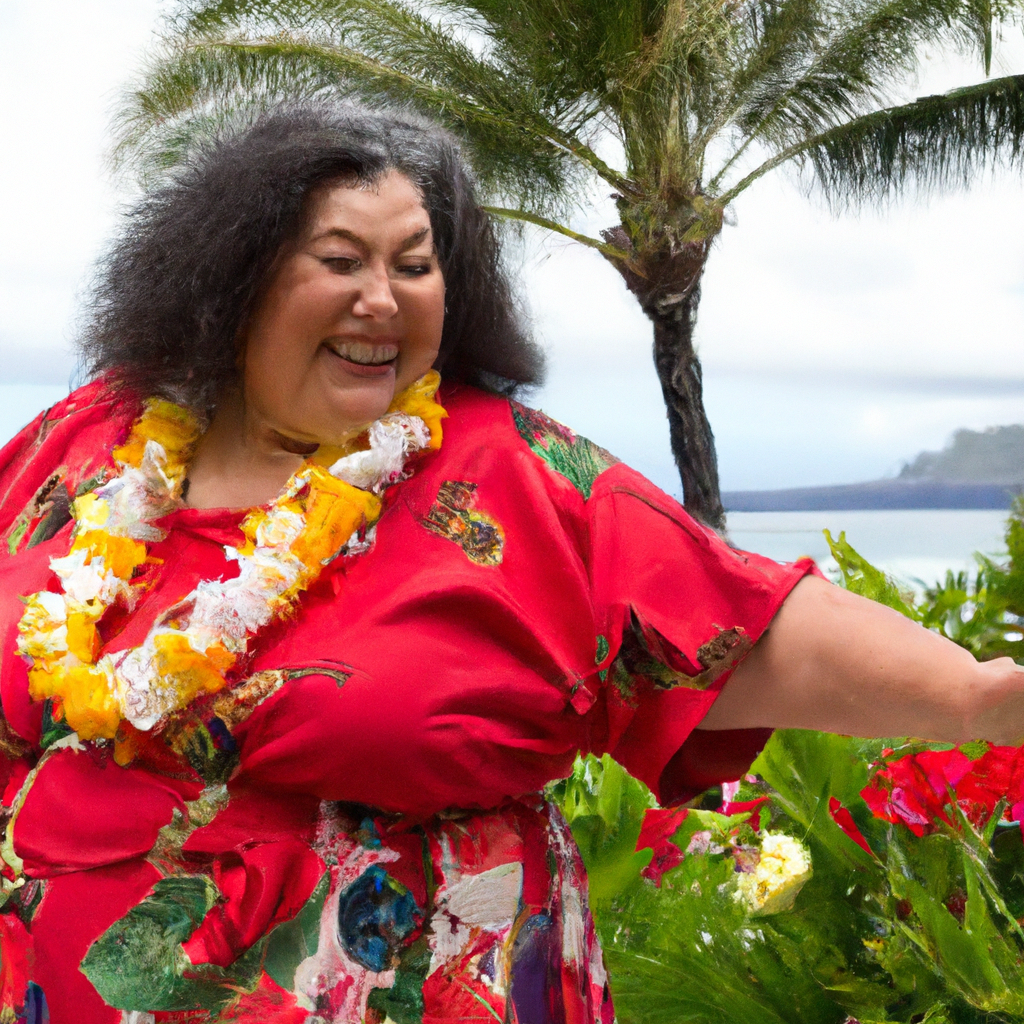Let’s embark on an enchanting journey through the captivating world of the Hula dance and its profound significance in Hawaiian culture. From the grassy shores to the lush rainforests, this ancient art form has been deeply embedded in the hearts and souls of the islanders for centuries. Delve into the rhythmic swaying of hips, the spirited chants, and the mesmerizing storytelling that make the Hula dance an essential cornerstone of Hawaiian identity. Discover how this vibrant dance not only entertains but also serves as a powerful medium for preserving history, passing down traditions, and celebrating the rich cultural heritage that makes Hawaii truly unique. Get ready to immerse yourself in the magic of the Hula dance and uncover the tales it weaves through its graceful movement and heartfelt expression.
Origins of the Hula Dance
Ancient Polynesians and their dances
The Hula dance, a traditional form of expression in Hawaiian culture, has deep roots in the ancient Polynesian traditions. The Polynesians, who migrated thousands of years ago to the Hawaiian Islands, brought with them their unique dances. These dances were an integral part of their rituals, ceremonies, and storytelling traditions. The Hula, in particular, was performed to honor their deities, celebrate important events, and convey their history and myths.
Influence of hula in Hawaiian culture
Over the centuries, the Hula dance became an essential aspect of Hawaiian culture, and its significance went beyond mere entertainment. It became a form of communication, a way to preserve and pass down the history, legends, and values of the Hawaiian people. The Hula was an expression of love for the land, a manifestation of spiritual beliefs, and a means to connect with ancestors and the natural world. Today, the Hula remains a cherished art form that embodies the essence of Hawaiian identity and culture.
Different Styles of Hula
Kahiko: Ancient style of hula
The Kahiko is the original and most ancient style of Hula dance. It embodies the traditional movements, chants, and rhythms of the early Polynesians. The Kahiko style is characterized by strong, precise movements and vigorous chanting, often accompanied by instruments such as the Ipu (gourd drum) and Pu’ili (bamboo sticks). The dancers wear more traditional attire, including ti leaf skirts and tapa cloth garments. Kahiko serves as a connection to the past, preserving the cultural heritage and spirit of the Hawaiian ancestors.
Auana: Modern style of hula
The Auana style of Hula emerged during the 19th and 20th centuries when Western influences began to intertwine with Hawaiian culture. Unlike the traditional Kahiko style, Auana incorporates more fluid and graceful movements. The accompanying music is often played with Western instruments such as the ukulele, guitar, or piano. This modern style of Hula is commonly performed at social gatherings, festivals, and concerts, allowing for more creativity and individual expression while still honoring the traditions and spirit of the Hula.
Hapa Haole: Blend of traditional and Western influences
Hapa Haole is a particular style of Hula that emerged during the early 20th century. It combines elements of traditional Hula with Western music and lyrics, often incorporating English verses alongside Hawaiian chants and melodies. This fusion resulted in a unique and catchy style that appealed to broader audiences, both locally and internationally. Hapa Haole’s popularity helped spread the knowledge and appreciation of Hula beyond the shores of Hawaii.

The Role of Hula in Hawaiian Society
Hula as a form of storytelling
The Hula dance has long served as a means of storytelling in Hawaiian society. Through graceful movements, hand gestures, and facial expressions, the dancers depict the stories of their ancestors, the creation of the islands, and legendary figures from Hawaiian mythology. Each dance narrates a tale, conveying historical events, emotions, or spiritual beliefs. By perpetuating these stories through Hula, the Hawaiian people strengthen their cultural identity and pass down their heritage to future generations.
Hula as a religious and spiritual practice
In addition to its narrative role, Hula is deeply intertwined with Hawaiian spirituality and religion. In ancient times, Hula was dedicated to the gods and performed in sacred spaces. The dances were seen as a form of communication with deities, an offering that expressed gratitude, devotion, and prayer. Even today, Hula is sometimes performed in religious ceremonies, connecting practitioners and spectators to their spiritual roots and creating a sense of unity and reverence.
Hula as a social and community activity
Hula is not only performed in religious or formal settings but also serves as a social activity within the Hawaiian community. It brings people together, fostering a sense of belonging and camaraderie. Hula groups and schools provide a space for individuals to learn, practice, and perform the dance together, strengthening bonds and forming lifelong friendships. Hula also plays a vital role in celebrations, festivals, and community events, creating a vibrant and lively atmosphere where everyone can participate and appreciate the Hawaiian culture.
Traditional Hula Instruments
Ipu: Gourd drum
The Ipu is a traditional Hawaiian drum made from a dried gourd. It has a unique sound and is commonly used in Kahiko-style Hula. The drum is hollowed out and carefully crafted, producing deep, resonant tones when struck or played with the hands. The Ipu provides the rhythmic foundation for the dancers, setting the pace and energy of the performance. Its distinctive sound adds an authentic and traditional element to the Hula dance.
Pu’ili: Bamboo sticks
Pu’ili are lightweight bamboo sticks used as percussive instruments in Hula. The dancers strike the Pu’ili together to produce rhythmic sounds that complement the movements and chants. The clacking of the bamboo sticks adds texture and excitement to the performance, enhancing the overall sensory experience for both the dancers and the audience. Pu’ili are often used in both Kahiko and Auana styles of Hula, adding a distinctive and playful element to the dance.
Ukulele: Small guitar-like instrument
The ukulele, derived from the Portuguese machete, is a small guitar-like instrument that has become synonymous with Hawaiian music and Hula. Its sweet and melodic sounds provide the harmony and melody for many Hula songs, especially in the modern Auana style. The ukulele’s versatility and portability make it an accessible and popular choice among musicians and Hula practitioners alike. Its gentle strumming and enchanting tones evoke the essence of the Hawaiian Islands and create a soothing ambiance during Hula performances.

Costumes and Adornments in Hula
Pa’u: Skirt worn by female dancers
One of the iconic elements of the Hula costume is the Pa’u, a skirt made of vibrant and flowy fabric that wraps around the waist. The Pa’u is commonly worn by female dancers and comes in various lengths, patterns, and colors, each carrying its symbolism and significance. The movement of the Pa’u as the dancers sway and twirl adds an elegant and dynamic visual element to the Hula performance, accentuating the grace and beauty of the dance.
Lei: Flower necklace
The Lei, a flower necklace, is another quintessential adornment in Hula. Made from delicate blossoms, leaves, or shells, the Lei is placed around the necks of both male and female dancers. The fragrance and beauty of the Lei infuse the Hula performance with a sense of freshness, joy, and aloha spirit. It serves as a symbol of love, affection, and respect, both for the dance and for the connection between the dancers and the natural world.
Ti leaf skirts and grass skirts
In certain Hula performances, dancers adorn themselves with ti leaf skirts or grass skirts. Ti leaf skirts are made by carefully braiding and weaving ti leaves together, creating a layered and textured look. Grass skirts, traditionally made from the leaves of the hala tree, are lightweight and swish as the dancers move. These natural skirts harken back to the ancient traditions, where dancers would perform barefoot on the earth, honoring the land and its abundant resources.
Hula Festivals and Competitions
Merrie Monarch Festival
The Merrie Monarch Festival is one of the most prestigious and renowned Hula events in Hawaii. Held annually in Hilo, Hawaii, it celebrates the beauty, skill, and artistry of Hula. Dancers and Hula groups from all across the islands gather to showcase their talents and compete in various categories, highlighting the diversity and richness of Hula styles. The festival not only serves as a platform for showcasing Hula excellence but also as a means to preserve and perpetuate Hawaiian cultural traditions.
Prince Lot Hula Festival
The Prince Lot Hula Festival, named in honor of Prince Lot Kapuāiwa, is another significant Hula event that takes place in Oahu, Hawaii. It focuses on traditional and authentic forms of Hula, particularly the Kahiko style. Dancers, musicians, and cultural practitioners come together to showcase their skills, paying homage to the roots and ancestral connections of Hula. The festival offers a glimpse into the historical and spiritual aspects of Hula, promoting appreciation and understanding of Hawaiian culture.
Hula O Nā Keiki
Hula O Nā Keiki is a unique Hula competition held exclusively for young dancers. This annual event, held in Maui, Hawaii, provides a platform for aspiring dancers aged 5 to 17 to showcase their talent and dedication to Hula. It encourages the next generation to carry on the traditions, values, and cultural heritage associated with Hula. The competition also fosters mentorship and learning opportunities, as established Hula practitioners guide and inspire the young dancers, ensuring that the art of Hula flourishes for years to come.

The Evolution of Hula
Changes in hula during colonization
The arrival of European explorers and colonizers in Hawaii brought significant changes to the island’s cultural practices, including the Hula dance. Missionaries, with their strict religious beliefs, saw the Hula as immoral and sought to suppress or even eliminate it altogether. Consequently, Hula was banned, and its practice was driven underground. Traditional chants, movements, and costumes were altered or lost, and the artform was at risk of disappearing entirely. However, despite these challenges, the spirit of Hula persevered, driven by the resilience and determination of the Hawaiian people.
Revitalization of hula in the 20th century
In the early 20th century, there was a renewed interest in the cultural heritage of Hawaii, which led to the revitalization of Hula. Dancers, musicians, and cultural preservationists sought to revive and restore the traditional practices, movements, and chants that had been lost or altered during the colonial period. Through research, oral history, and the efforts of dedicated individuals, the authentic Hula began to resurface, helping to reestablish its significance and impact on Hawaiian culture. This revival sparked a renewed sense of pride and appreciation for the Hula dance.
Misconceptions and Stereotypes about Hula
Hula as a sexualized form of entertainment
One common misconception about Hula is that it is a sexualized form of entertainment. This distorted perception has been perpetuated through various mediums, such as movies, television shows, and advertisements. However, the true essence of Hula lies in its cultural and spiritual significance, far removed from any sexual connotations. Hula is an art form that celebrates the beauty, grace, and spirit of Hawaii, connecting individuals with their heritage and providing a platform for storytelling and expression.
Hula as just a tourist attraction
Another stereotype that often arises is that Hula is merely a tourist attraction, performed solely for the entertainment of visitors. While it is true that Hula has gained popularity among tourists, particularly in the context of luau shows and hotel performances, it is important to recognize that Hula is deeply rooted in Hawaiian history, identity, and spirituality. It is a way of life for many Hawaiians and holds immense cultural significance beyond its commercialized portrayal. Hula is a cherished art form and an essential aspect of the Hawaiian community.

Preserving and Celebrating Hula
Hula schools and practitioners
Hula schools, known as hālau hula, play a critical role in preserving and perpetuating the Hula traditions. These schools serve as learning centers where students, known as haumāna, are taught the movements, chants, and stories associated with Hula. Experienced teachers, known as kumu hula, guide and mentor the students, passing down their knowledge and expertise. Hula schools provide a nurturing environment for cultural preservation and self-expression, ensuring that the art form continues to thrive for generations to come.
Hula workshops and classes
In addition to hālau hula, Hula workshops and classes are held throughout Hawaii and even beyond, providing opportunities for both locals and visitors to learn and appreciate the art of Hula. These workshops often focus on specific aspects of Hula, such as technique, storytelling, or cultural context. Whether participants are beginners or experienced dancers, the workshops offer a unique and immersive experience, allowing individuals to deepen their understanding and connection to the rich traditions of Hula.
Hula as a cultural tourism attraction
Given its cultural significance and widespread popularity, Hula has become a significant aspect of cultural tourism in Hawaii. Visitors from all around the world are drawn to the islands to witness and participate in Hula performances, festivals, and workshops. Hula provides a gateway for individuals to learn about Hawaiian culture, customs, and history. By incorporating Hula into tourism initiatives, the Hawaiian community can share their traditions and foster cross-cultural understanding, creating a meaningful and authentic experience for visitors.
The Global Impact of Hula
Spread of hula beyond Hawaii
In recent decades, Hula has transcended its Hawaiian origins and has spread to various parts of the world. Hula schools and groups can now be found across the United States and in countries such as Japan, Germany, and New Zealand. These international practitioners of Hula showcase their skills and passion for the dance, contributing to the global appreciation and understanding of Hawaiian culture. Through their dedication and commitment, Hula continues to touch the hearts and minds of people worldwide.
Hawaiian cultural identity through hula in the diaspora
For the Hawaiian diaspora, Hula serves as a significant connection to their roots and cultural identity. Away from the islands, Hula becomes a way to keep traditions alive and maintain a sense of belonging. Hula groups in the diaspora provide a platform for Hawaiians living outside their homeland to gather, share their stories, and celebrate their heritage. Through Hula, the Hawaiian diaspora can pass down their traditions to future generations and foster a sense of community and cultural pride.
In conclusion, the Hula dance holds immense cultural and spiritual significance in Hawaiian society. Its origins in ancient Polynesian traditions, diverse styles, and instrumental accompaniment reflect the rich heritage and artistry of the Hawaiian people. From its role in storytelling and religious practices to its function as a social and community activity, Hula has remained an integral part of Hawaiian culture throughout history. Despite misconceptions and stereotypes, Hula continues to be preserved and celebrated through hula schools, workshops, and festivals, both in Hawaii and around the world. The global impact of Hula reinforces the importance of cultural preservation, as it serves as a powerful symbol of Hawaiian cultural identity and the enduring spirit of the islands.

